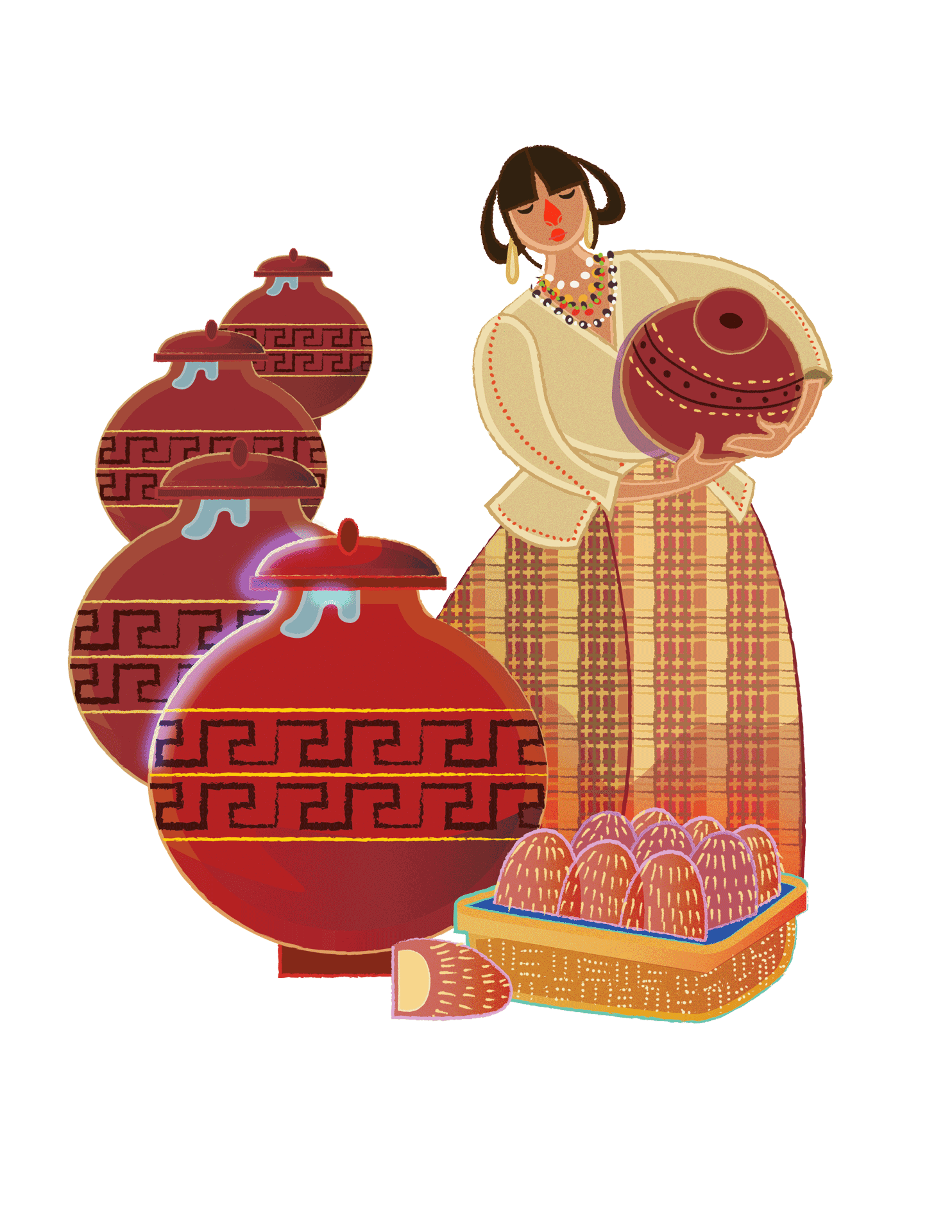Story by
Chiara de CastroArt by
Dhalaine BautistaEst. Read Time
Filipinos find every opportune moment to snack or feast, and we need not be told when or where we should be drinking—dusk or dawn, any occasion is perfect for libation. Celebrated food writer and ethnographer Edilberto Alegre made the case for our cultural fondness for the fermented beverage in his book, Inumang Pinoy, by mapping out the wide variety of native moonshine produced throughout the archipelago, thus giving us an atlas for the indigenous vegetation and sociological norms that surround any given drink.

LAKSOY | BUTUAN CITY
Spanish colonial accounts dating as far back as the 16th century indicate records of a wine made from wild nipa palm: pure, white, sweet, and makes a fiery flame when lit. Extracted from the thick flesh of its fruit, nipa juice produces an impeccably sweet type of vinegar when the fermentation process is undisturbed. The people of Babag in Butuan City make laksoy by interrupting fermentation and distilling the juice with makeshift contraptions of clay and wood. The result is a sweet, clean-tasting liqueur they call their own, highly sought after by neighboring towns.

TAPUY | BUKIDNON
In higher elevations and mountainous regions, libations are usually produced from sugarcane and a rice-based yeast, instead of the nipa and coconut prevalent in the flat lands. The Manobos of Bukidnon refer to their rice yeast as tapey and its fermented liquid product as agkud, which is essentially like beer or rice wine. With an elaborate cooking process that involves several steps of repetitive cooking, cooling, mixing, soaking—and at some point, eating—the rice wine is left to ferment in a jar for several weeks. The result is a very strong ferment, also referred to as tapuy in the Cordilleras.

BASI | ILOCOS
Sometimes, the story of a drink is simply dictated by its ecology. Such is the case for basi, the sugarcane liqueur produced only by the Ilocanos in northern Luzon. The liquid is infused with dried twigs, leaves, and flowers in an earthen jar (burnay) for three to six months. Distinct and renowned for how it’s produced, basi depends on the existence of one crucial ingredient: the samak tree, which grows only in this region.

TUBA | LEYTE
Requirement number one in the process of producing tuba: Must be willing to scale trees for a drink. This sweet and strong white spirit is made from the sap of the coconut’s petiole. Other requirements include the minimum age of the coconut tree to produce good tuba (at least eighty years old), a bamboo tube to extract the sap, a bakhaw bark, and impeccable timing when decanting and distilling. The process of producing tuba is traditionally handed down through generations, from father to son, often from the same tree—it can usually outlive its human.

INTUS | DAVAO DEL NORTE
Deep in the heart of Pantukan in Davao del Norte, a distinct local wine is produced mainly by its matriarch. Its main ingredient: taro. This starchy root crop is boiled in water, after which the liquid is transferred to a jar (or tadyaw), entailing a repetitive process of boiling, transferring, fermenting, infusing with langkawas, and adding sugar. It is said that good intus tastes best when aged for two to three years, and when the tadyaw is buried underground.
--
This story was originally published in GRID Volume 02.





